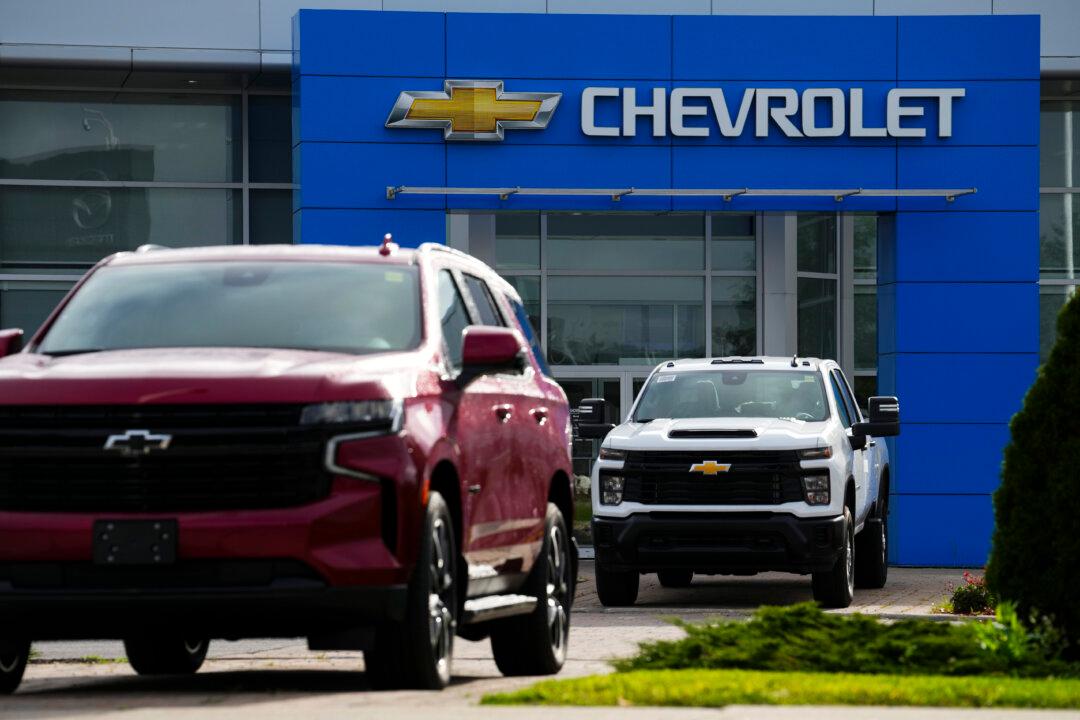A car is stolen every six minutes in Canada by organized crime, and auto theft is most rampant in Toronto, according to an Aug. 28 rates.ca news release. The Toronto Police Service’s Public Safety Data Portal shows that 9,606 cars were stolen in 2022—nearly triple the number stolen in 2015.
According to rates.ca, insurers are charging drivers a surcharge if they drive a car that’s more at risk of theft.Rates.ca predicts continued insurance rate increases for vehicle drivers, citing a report from Équité Association that said all provinces saw double-digit increases in auto thefts between 2021 and 2022.
In particular, vehicle thefts in Quebec, Newfoundland, and PEI saw an increase of 50 percent or more from 2021 to 2022, while Ontario saw a 48.3 percent spike in thefts, according to Équité’s “2022 Vehicle Theft Trend Report,” released in June 2023.
The report said that, for the first time in Canada, it’s estimated that in 2022 the insurance industry lost over $1 billion in auto theft claims.
In Ontario, a car is stolen every 48 minutes, states a May 3 provincial government news release.
According to the Insurance Bureau of Canada (IBC) in a statement to rates.ca, theft claims costs in Ontario totalled approximately $700 million in 2022 alone—up nearly 300 percent from 2018.
“At the end of the day, premiums follow claims costs,” said the IBC.
According to the latest statistics from Équité on the most stolen models of vehicles, the most stolen vehicle of 2021 in Canada was the Honda CR-V, model years 2016 to 2021. Next on the top-five list were the Lexus RX series, 2016 to21; Ford F-150 series, 2015 to 2020; Honda Civic, 2016 to 2021; and Toyota Highlander, 2013 to 2019.
Cars that are more likely to be stolen are increasingly more expensive to insure, according to rates.ca, which states that comprehensive insurance premiums on specific commonly stolen cars has jumped between 25 percent to 50 percent over the last two years.
“For instance, drivers fitting the same profile—35-year-old males in Toronto with no prior convictions—who took out coverage for the CR-V from the same insurer saw an increase of 26 percent on the comprehensive portions of their auto insurance between 2022 and 2023,” said rate.ca.
Preventing Theft
Insurance companies have introduced a $500 high-theft vehicle surcharge for owners of high-risk vehicles, removing the surcharge only if proof of purchase of an anti-theft device is provided, such as a steering wheel lock.
“If we can better educate drivers on how to protect their vehicles, and have vehicles secure, then you’ve eliminated much more of the problem,” says Elliott Silverstein, director of government relations of CAA Insurance Company. “People can see that there’s a steering wheel lock on that car that’s going to require [them] to spend 10 or 20 minutes trying to break that open.”
Some insurance companies, including Aviva, Gore Mutual, TD Insurance, and others, according to rates.ca, are asking customers to install a Tag tracking system on their car to help prevent theft and recover stolen cars. Such a system, produced by anti-theft tracking company Tag, typically costs about $400 to install, according to rates.ca.
To some extent, thieves target different cars depending on the province or region. For example, Équité’s “2022 Vehicle Theft Trend Report“ says that most stolen vehicles in Ontario and Quebec were model year 2017 and newer, as organized crime rings focus on stealing new/luxury vehicles for maximum profit in overseas sales.
Trucks were the most stolen type of vehicle in Western Canada, whereas in Ontario and Quebec, it was SUVs, and in Atlantic Canada, it was sedans.





